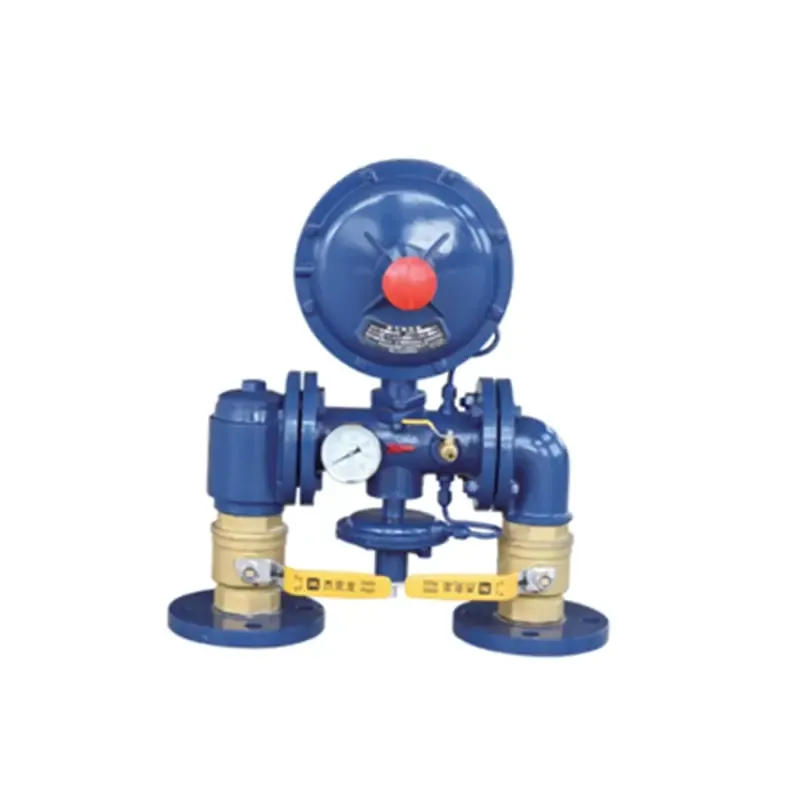
Dec . 03, 2024 16:00
Back to list
Gas Pressure Regulator Understanding Its Functions and Applications in Various Industries
Gas Pressure Regulators An Essential Component in Modern Technology
Gas pressure regulators play a crucial role in various applications, ranging from household appliances to industrial machinery. Their primary purpose is to maintain a constant pressure of gas, ensuring safe and efficient operation. This article delves into the significance, functionality, and applications of gas pressure regulators, highlighting their importance in our daily lives and industries.
Understanding Gas Pressure Regulators
A gas pressure regulator is a mechanical device that automatically reduces the pressure of a gas from a higher level to a lower, controlled level. By providing a steady output pressure despite variations in the input supply or downstream demand, these devices ensure optimal performance and safety. Commonly used with gases such as natural gas, propane, and oxygen, regulators are found in applications ranging from heating systems to data centers.
How Gas Pressure Regulators Work
At the core of a gas pressure regulator is a diaphragm that responds to changes in pressure. When gas enters the regulator, it exerts pressure on the diaphragm. If the output pressure rises above the desired level, the diaphragm moves, activating a valve that decreases gas flow. Conversely, if the output pressure drops, the diaphragm will allow more gas to flow through to maintain stability. This self-regulating mechanism ensures that systems can rely on a consistent and safe pressure, adaptable to varying demands.
Types of Gas Pressure Regulators
There are several types of gas pressure regulators, each designed for specific applications
.
2. Two-Stage Regulators More complex than single-stage regulators, these devices provide finer pressure regulation through two stages of pressure reduction. They are ideal for applications requiring stable output pressure and are commonly found in laboratory settings.
منظم ضغط الغاز

3. Back Pressure Regulators These regulators maintain a set pressure regardless of changes in flow rate or upstream pressure. They are often used in gas distribution systems and chemical processes.
4. Dome-Loaded Regulators These regulators utilize a dome filled with gas or air to assist in pressure regulation. By adjusting the dome pressure, operators can control the setpoint more precisely, making them suitable for high-precision applications.
Applications of Gas Pressure Regulators
Gas pressure regulators are widely used in various sectors, including
- Healthcare In hospitals, gas pressure regulators are critical for delivering medical gases, such as oxygen and nitrous oxide, at safe and regulated pressures for patient care.
- Industrial Applications In manufacturing plants, regulators are used in processes involving combustion, welding, and chemical reactions, where maintaining the correct gas pressure is vital for efficiency and safety.
- Residential and Commercial For heating and cooking, regulators ensure that appliances receive a consistent flow of gas, preventing hazards like leaks or inadequate heating.
- Automotive In vehicles that run on compressed natural gas (CNG) or liquefied petroleum gas (LPG), regulators are essential for effective fuel delivery and engine performance.
Conclusion
Gas pressure regulators are essential components in modern technology, playing a pivotal role in ensuring safety and efficiency across various applications. Their ability to maintain a stable gas pressure contributes significantly to the smooth operation of many systems, from simple home appliances to complex industrial machinery. As technology continues to advance, the design and functionality of gas pressure regulators will evolve, enhancing their reliability and application in increasingly sophisticated settings. Understanding their operation and importance can help users make informed decisions, ensuring both efficiency and safety in gas handling processes.
Latest news
-
Safety Valve Spring-Loaded Design Overpressure ProtectionNewsJul.25,2025
-
Precision Voltage Regulator AC5 Accuracy Grade PerformanceNewsJul.25,2025
-
Natural Gas Pressure Regulating Skid Industrial Pipeline ApplicationsNewsJul.25,2025
-
Natural Gas Filter Stainless Steel Mesh Element DesignNewsJul.25,2025
-
Gas Pressure Regulator Valve Direct-Acting Spring-Loaded DesignNewsJul.25,2025
-
Decompression Equipment Multi-Stage Heat Exchange System DesignNewsJul.25,2025

